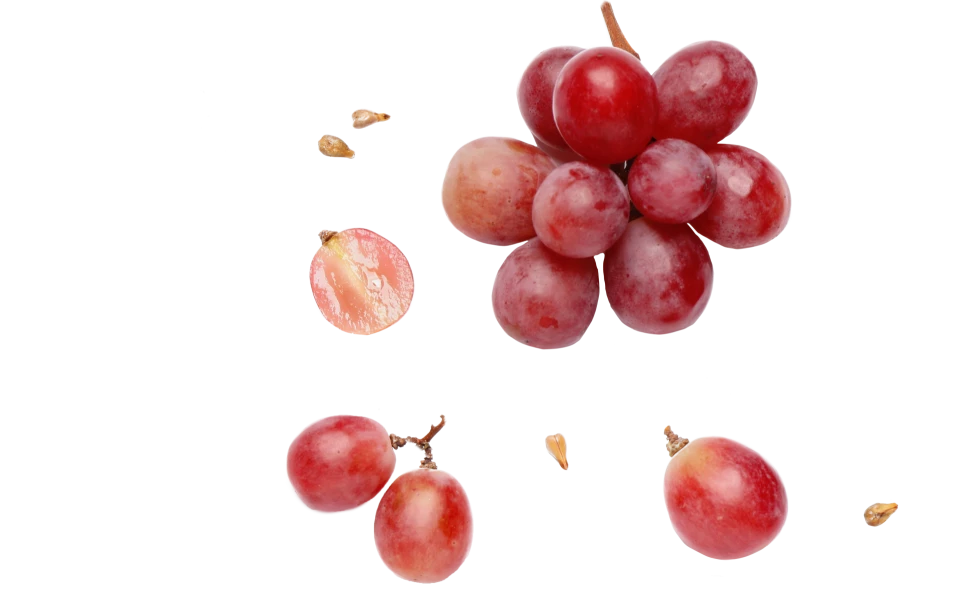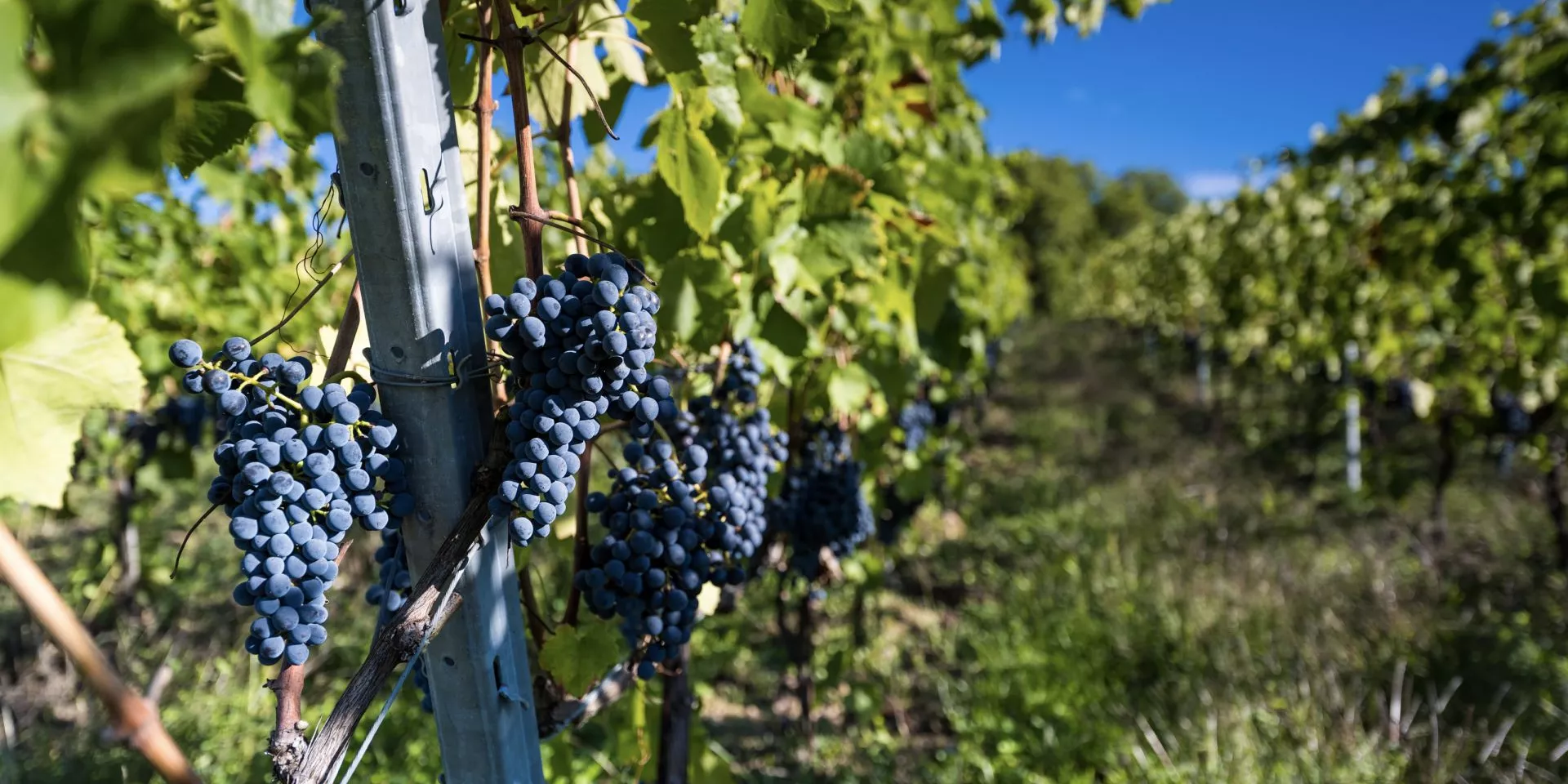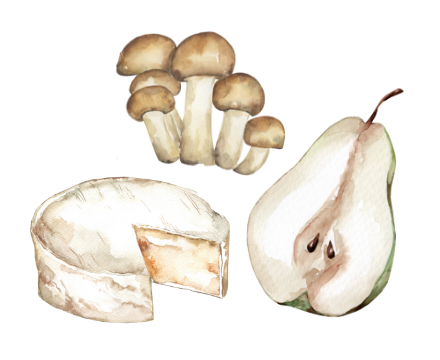Red grape varieties: Mondeuse, Persan, Pinot Noir, etc.
Mondeuse
Synonyms: Bon-Savoyan, Savoyen, Maldoux (Jura), Persaigne (Ain), Mandouze, Molette noire, Tournarin, Gros Plant.
Nicknamed in the Rochette Valley as “the mother of wine.”
Vigorous vine; large five-lobed leaves, longer than they are wide.
Fairly large, pyramidal, and elongated cluster; medium-sized, uneven, spherical berries, loosely packed, with a bluish-black color.
This vigorous and productive grape variety is particularly well-suited to our mountain climates, which likely explains why it is not found elsewhere in France. It thrives especially well on limestone scree and schistous soils. It grafts easily.
While it is easy to protect against downy mildew, it is less resistant to powdery mildew.
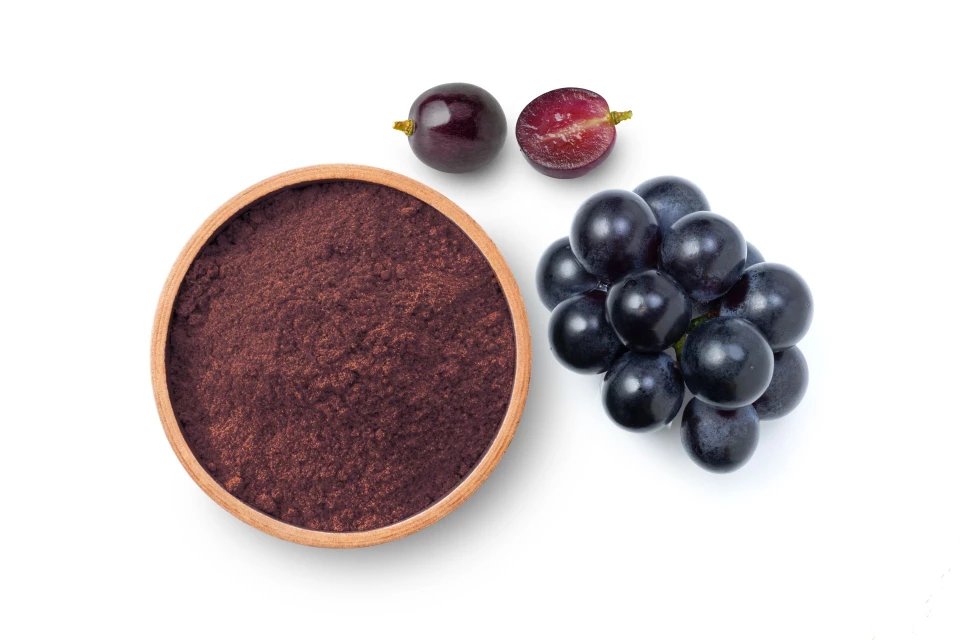
Persan
Synonyms: Princens, Becuette, Petit-Becquet, Posse de chèvre …
A vine with hard wood, medium-sized dark green leaves, round with three lobes. The petiolar sinus is open in a V shape. The cluster is medium-sized and conical. The olive-shaped berries are quite firm, with a resistant skin that tends to shrivel during ripening.
Persan is very sensitive to powdery mildew and downy mildew. Its slightly late ripening makes it vulnerable to spring frosts, but it offers good yields.
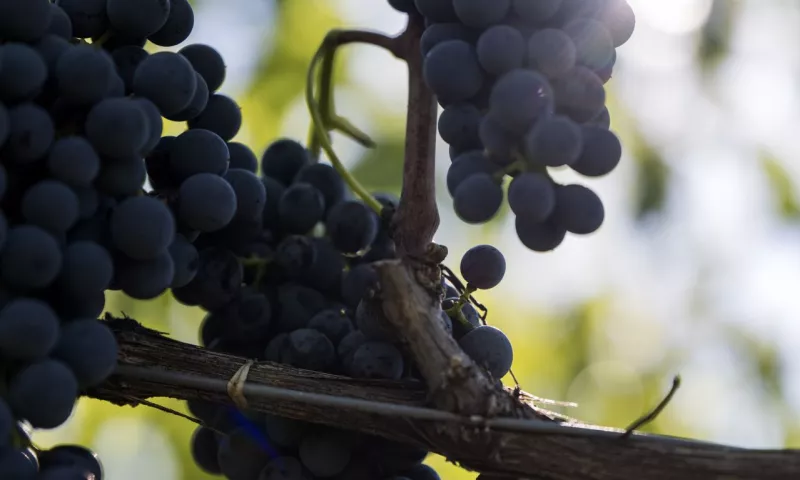
Gamaret
Origin: This variety was created in 1970 and is the result of a cross between Gamay and Reichensteiner.
Gamaret is a second-period grape variety; it buds two days after Chasselas and reaches maturity two weeks after this benchmark variety.
Gamaret is a fairly vigorous variety with consistent fertility and a semi-erect to horizontal growth habit. Short pruning is preferable, and it needs to be trellised.
It is somewhat sensitive to drought and conditions conducive to water stress.
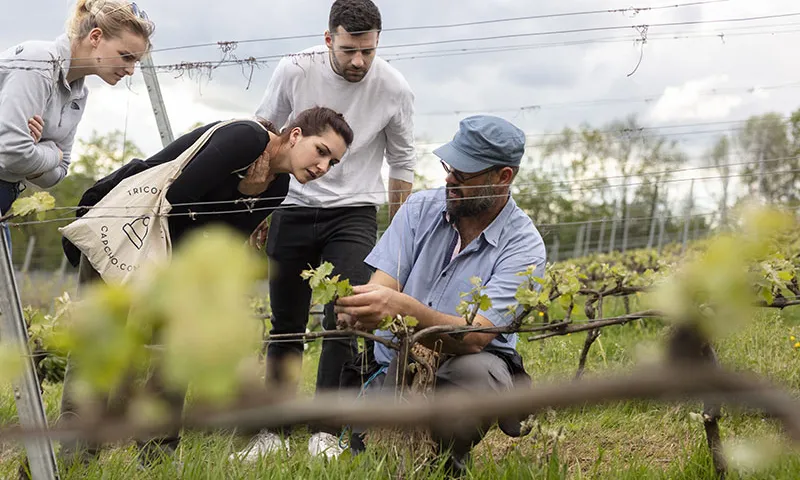
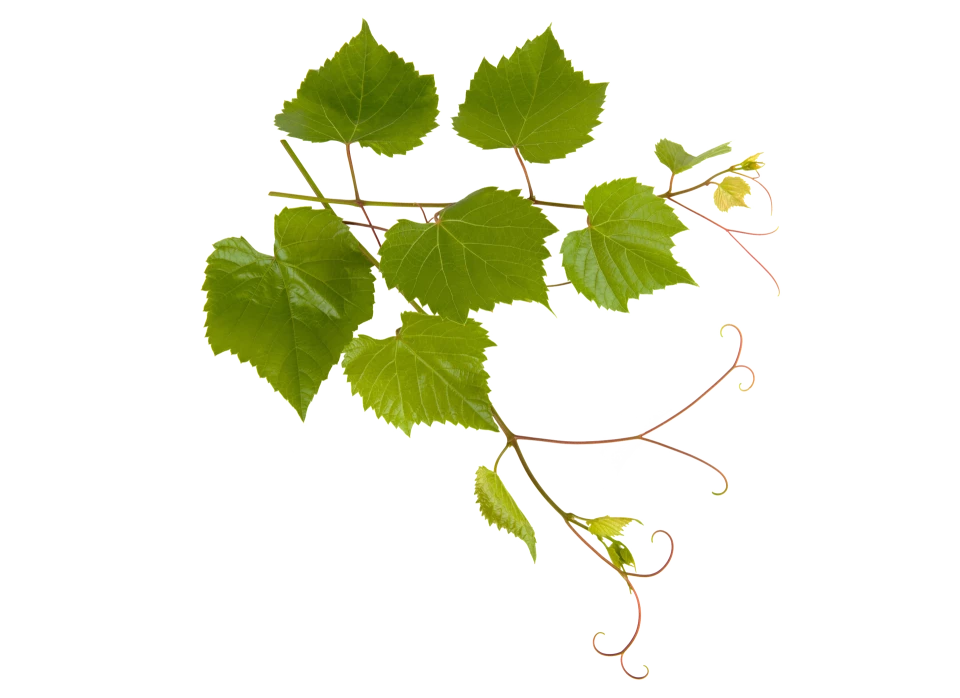
Pinot
Pinot Noir is an early-ripening grape variety, both for the start of its vegetative phase and its maturity.
It buds two days after Chasselas, the reference grape variety, and reaches full maturity half a week to a week later, making it a first-period variety.
Pinot Noir is a fairly vigorous but low-yielding variety. It is highly temperamental and sensitive to spring frosts. It is generally trained on trellises. Pinot Noir shows its full potential when its vigor is low to moderate and yields are limited. This grape variety requires meticulous debudding and tends to produce a significant number of small secondary clusters.
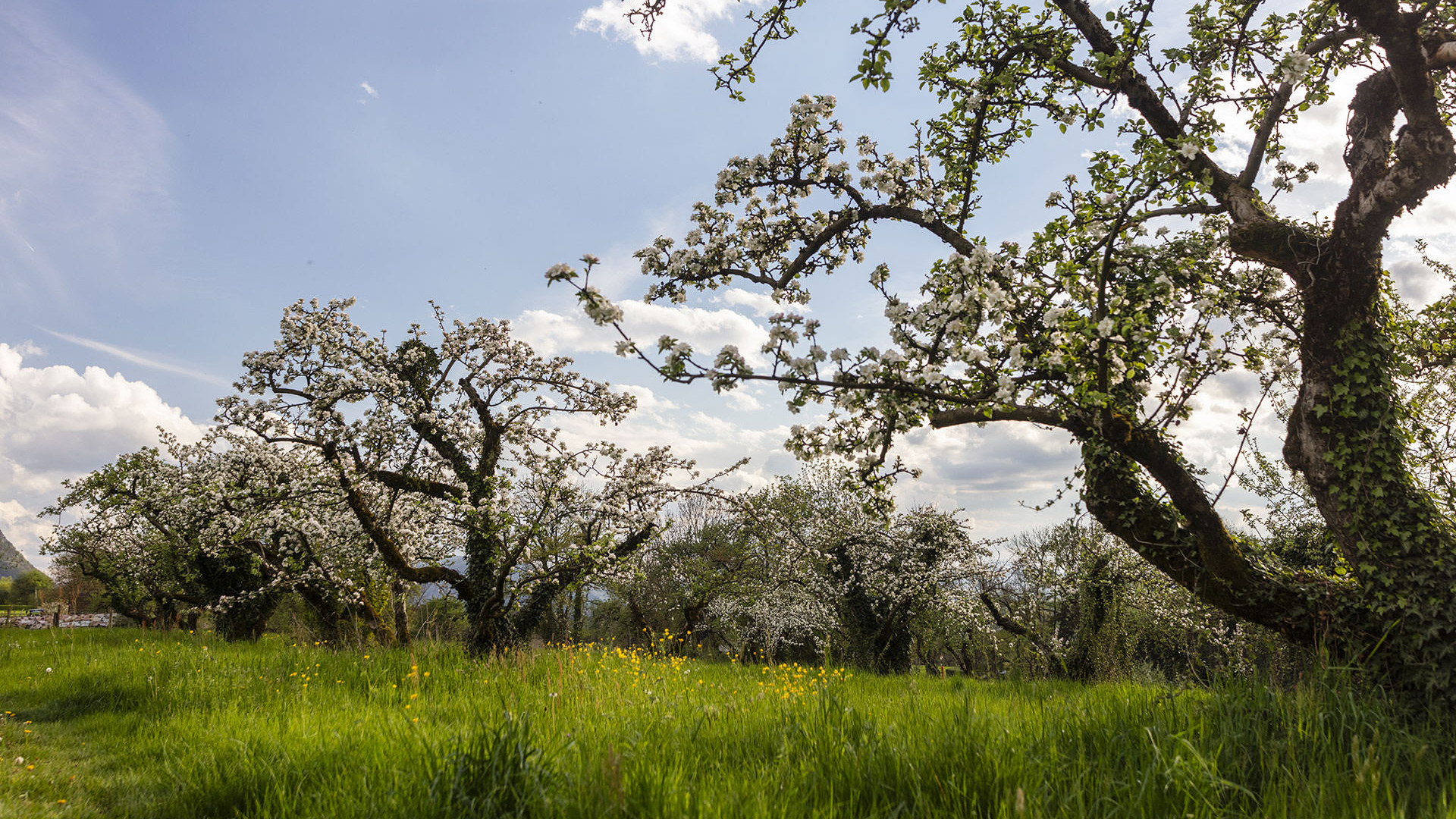
White grape varieties
Jacquère, Altesse, Chardonnay, etc.
Jacquère
Synonyms: Plant des Abymes, Jacquière, Giboudot blanc, Martin Col Blanc, Robinet, Coufe-Chien...
Like Mondeuse, Jacquère is well adapted to the local climate. It is a second-period variety, meaning it has a relatively late ripening. It is quite productive. The vine is vigorous, with large, slightly crinkled leaves that have three or five lobes.
Jacquère is very sensitive to black rot but defends itself fairly well against downy mildew and powdery mildew.
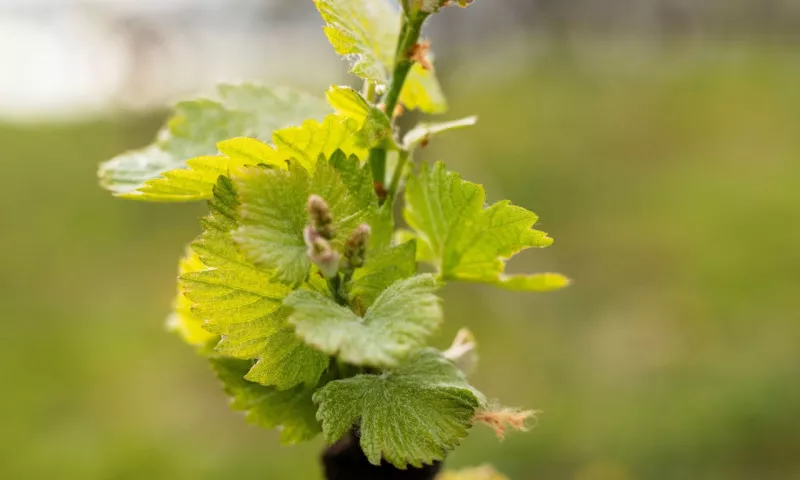
Roussanne
Roussanne is a late-ripening grape variety, as it buds 8 days after the reference grape, Chasselas. Its maturity also occurs late, with a delay of three and a half weeks compared to Chasselas.
Roussanne is therefore considered a second-period grape variety.
Roussanne is a vigorous variety that produces very long shoots, requiring careful trellising. It can be trained with moderately long pruning or short pruning.
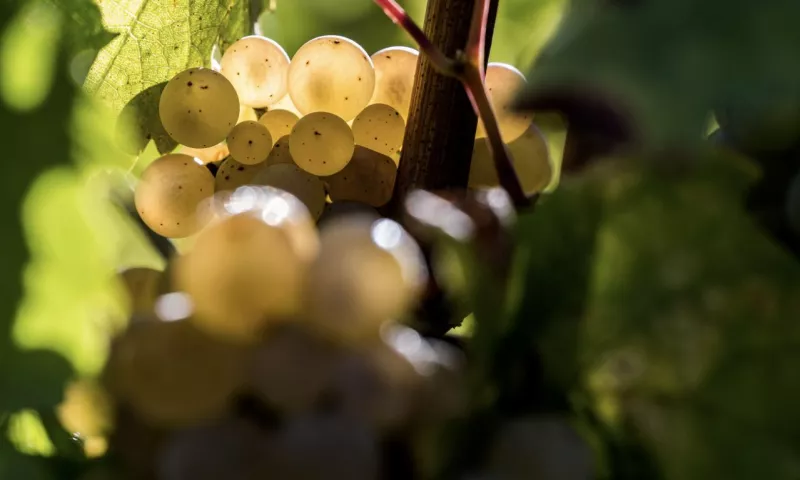
Altesse
Synonyms: Roussette, Roussette de Montagnieu, Roussette Haute, Fusette d’Ambérieu, Mâconnais, Prin blanc, Ignan blanc...
A vigorous grape variety with spreading shoots. Young leaves are covered with white, lying-down hairs and are heavily bronzed. Adult leaves are fairly large, shiny, and slightly blistered. Upper and lower lateral sinuses are shallow. Petiolar sinus is open and U-shaped. Petiole point is red. Serrated, ogival teeth. Clusters are small to medium, cylindrical, compact, and often shouldered. Berries are loosely packed, yellow-green, round, or slightly oval. The skin is thick, turning pink at full maturity.
Budding occurs moderately early, with moderately late ripening. It is sensitive to frost and grows vigorously.
Highly sensitive to botrytis, downy mildew, and excoriosis, but resistant to powdery mildew.
